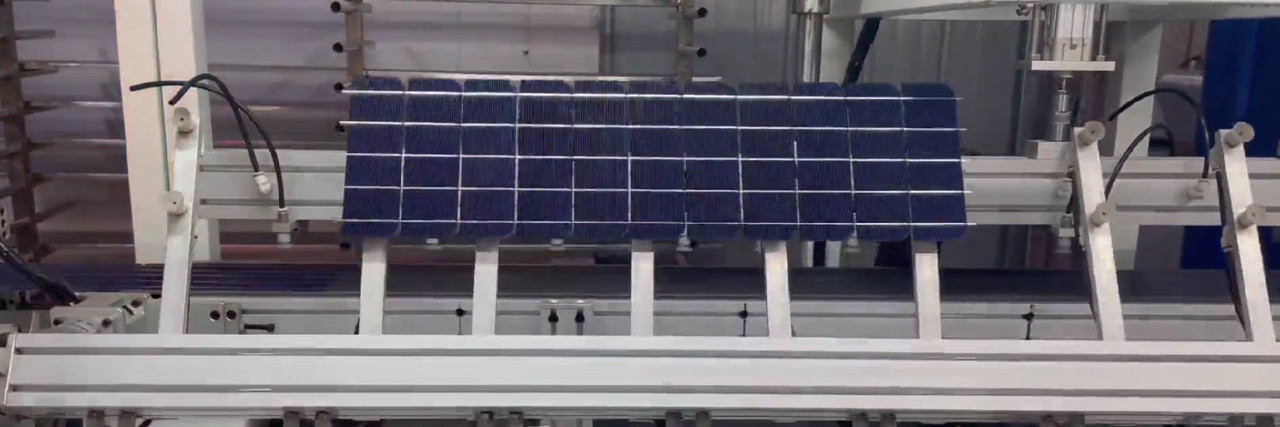What are solar panels made of?
What are solar panels made of?
When you look into solar, it's easy to see why it's coming up so often; harnessing the sun's power can give us endless, efficient, clean, and cheap energy.
Solar (or photovoltaic) technology has made giant leaps in recent years, helping to minimize the cost and difficulty of installing a photovoltaic system. The cost of installing a solar system has decreased by almost 90% in the last decade!
If you want to install a 2000-watt residential solar system in your home, you're looking at spending around $2800-$5600. This is still a big purchase for the average household, but it's an excellent investment for nearly everyone. While it can take an average of five to ten years to pay for itself in energy savings, these systems are robust and will last many years. With the ever-increasing conventional energy prices, your system could pay for itself even sooner!
Click here for more information about How do solar panels affect your mortage?.
One of the critical components of any solar system is the solar panels. These panels are what most people think about when they picture a solar system. The panels must be highly durable and well-designed to ensure a system is financially and environmentally feasible. On average, our panels are designed to withstand 25 years of use and abuse.
We're proud of our solar panels and the processes used to manufacture them. So proud that we have decided to write a blog about the process and technology used to make our panels some of the best in the industry.
Solar cells: What makes up a solar cell?
Solar cells are the most vital foundation of solar panels. They absorb the sun's rays and convert them (using the photovoltaic effect) through a physical and chemical reaction into electrical movement.
There are several types of solar cells. The majority of our panels use one of two types: monocrystalline or polycrystalline. While they have different names, they share the same base material: silicon.
Here's a glimpse into how our two primary solar cells are created.
Polycrystalline solar cells
![]()
Metallurgical Silicon
1.Starting with quartzite ore mined from the earth, we process it to extract metallurgical silicon. The entire tech industry uses a similar process to refine silicon for components.
2.We process the metallurgical silicon to refine it to 99.99999% purity. Without a pure base material, the quality and efficiency of our solar cells would be seriously jeopardized.
3.The silicon is melted down and formed into a large brick-like block, called an ingot.
4.This ingot is sliced into thousands of thin wafers.
5.Those wafers undergo a process to etch them and improve their surfaces to catch sunlight.
6.The wafers are coated in a phosphorus coating that helps create "p-n junctions." This is where the critical events happen to convert rays into electricity.
7.Anti-reflective coatings are applied to the wafers since they need to capture the sunlight, not reject it.
8.Finally, they are ready for the assembly part.
*This is an extremely high-level view of the process. The actual process involves precision, experience, and the right tools to do it properly and safely. Do not attempt this yourself.
Monocrystalline cells
The process used to produce monocrystalline solar cells is similar to that of polycrystalline cells except for the third step, at which several techniques can be used to produce monocrystalline ingots.
The most common method is the Czochralski method, called the "CZ method," which uses a special rod with a "seed" on the end that is dipped into the molten silicon. A reaction happens at the interface of the seed with the molten silicon, and the new crystal begins to form. The rod is then slowly pulled out, generally under rotation, "pulling" a pure monocrystalline ingot with it. They call this "growing a crystal." If you ever made rock candy as a kid or dipped candles, it's a similar process.
The CZ method is often preferred because it allows greater control of the ingot being created. Size, speed, purity, occlusions, etc.
Other methods, like zone melting, can grow seed crystal ingots on a polycrystalline silicon rod when heated by a radiofrequency heating coil, and the Bridgman technique, which involves passing the crucible containing the molten silicon and seed from a hot zone to a cold one. During the process, the seed will grow into what is wanted.

Czochralski method
Image source: sciencedirect
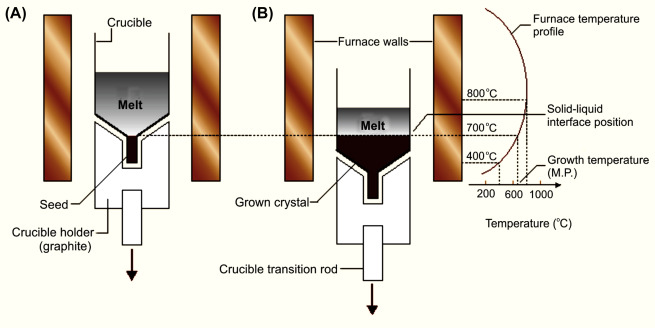
Bridgman technique
Image source: sciencedirect
Solar panels: what is a solar panel, and what are solar panels made out of?
A solar panel is a device that captures sunlight and turns it into usable energy.
As we covered above, you've seen that solar cells are made from silicon. Now, what about the rest of the panel?
Let's dive into that.
Solar Panel Components
A solar panel is made up of solar cells that are welded together, TPT films, EVA films, glass, frames, etc.
Step #1: Solar cell test
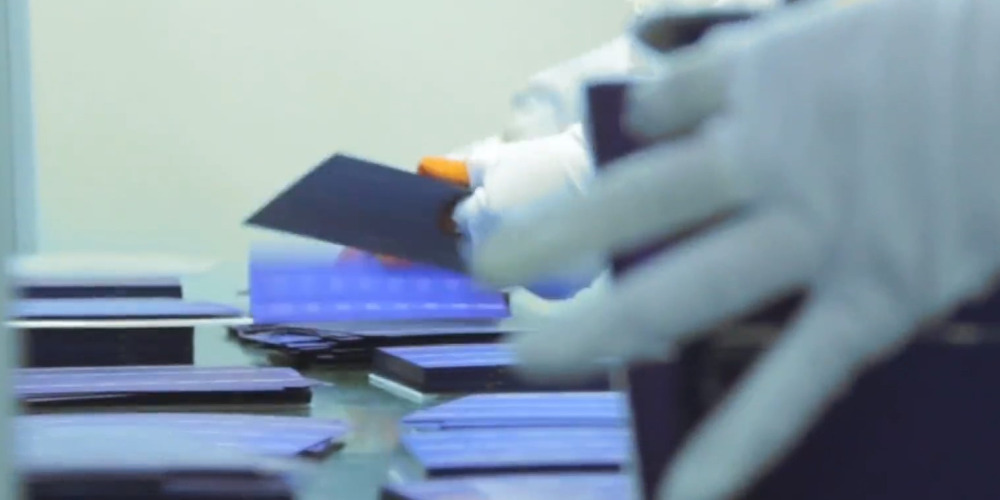
Our solar cells undergo a quality test in which they receive an A, B, or C rating. Only the most flawless cells receive an A rating. The higher the cell grade, the more efficient it is and the longer it will last. Frequently, this is the difference between lower-cost solar panels and those that cost more. Yet, it's rarely something you can see with your own eyes after the panel is assembled.
Cells with broken grids, poor printing, and imbalanced coatings will receive a B-rating. Recycled cells with defects like large-scale weak printing, and loose grids, will receive a low C-rating.
A professional photovoltaic cell I-V test system can quickly tell to which group these solar cells belong.
Step #2: Single and series solar cell welding
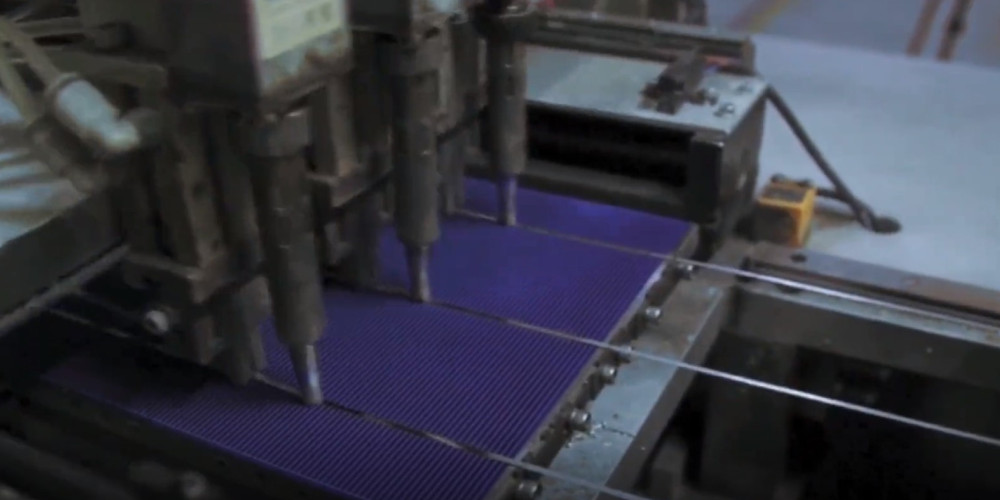
At this stage, the solar cells are welded together to keep them in place within the solar panel frame and to allow proper conductivity of the cells. Solar cells are highly delicate, and human hands can easily damage them, so this process has to be finished by machines. The welded solar cells must be straight and flat without bumps or weak welding junctions.
Step #3: Overlapping the layers
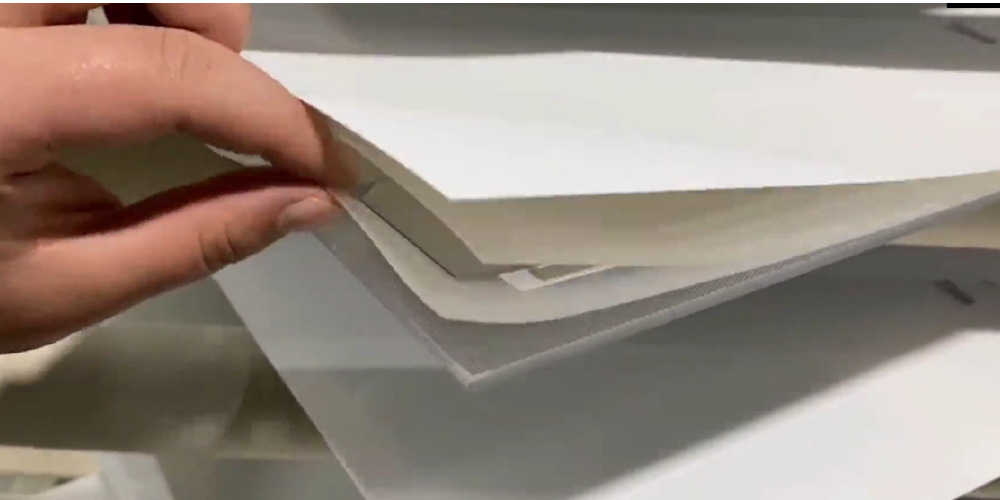
Solar panels are comprised of different layers stacked on top of each other. The various layers, TPT film, EVA film, now-welded solar cells, EVA film, and glass panels, will be stacked individually to make a composite.
Next, the panel undergoes an Electroluminescence (EL) test. The EL test is a non-invasive procedure that can be repeated years after the solar panels are installed that looks for microcracks in the solar cells and other layers. Even the most minor fissures can harm performance.
Step #4: Machine laminating
After the EL test is passed, we send the stacked components to a special machine for lamination. Using a vacuum, we remove any air that is between the layers to ensure purity and that there are no bubbles. The EVA film is heated until it melts and bonds the layers together.
One of the layers we add is the Tedlar Polyester Tedlar (TPT) back sheet. The TPT back sheet is a material combination that minimizes the overall thickness while increasing strength.
Step #5: Frame and junction box mounting
Now the frame for the laminated and nearly complete panel is assembled, and the panel mounted. When the job is done, a brand-new solar panel is finished. Before it can be shipped to our customers, it will be cleaned and tested yet again to ensure the high quality that we require of our products.
Step #6: Product test and packaging
This step separates us from our competition. We take the time to thoroughly and carefully test each solar panel. We ensure it functions to our standards and looks good. We check every aspect of its quality, from functionality to frame quality and mounting holes. It costs us a little bit more to handle our products this way. Still, it's worth it to deliver the highest quality equipment to our customers that will last for many years to come.
Only The Best
At Renogy, we're passionate about solar energy and proud of the products we sell. We offer the highest-quality monocrystalline solar panels on the residential market. Our panels are efficient and reliable, and they're backed by a 25-year warranty. We believe in solar energy's potential to transform how we power our homes and businesses. We're committed to providing our customers with the best products and customer service. Check out our extensive solar panel offerings and 12V battery series today!
Related articles:
How Does A Solar Panel Work On A House?
New Product Spotlight: 100W Eclipse Solar Panel - Renogy United States
Should I wire my panels in parallel or in series? - Renogy United States
3000w Inverter Charger vs 2000w Inverter Charger - Renogy United States

